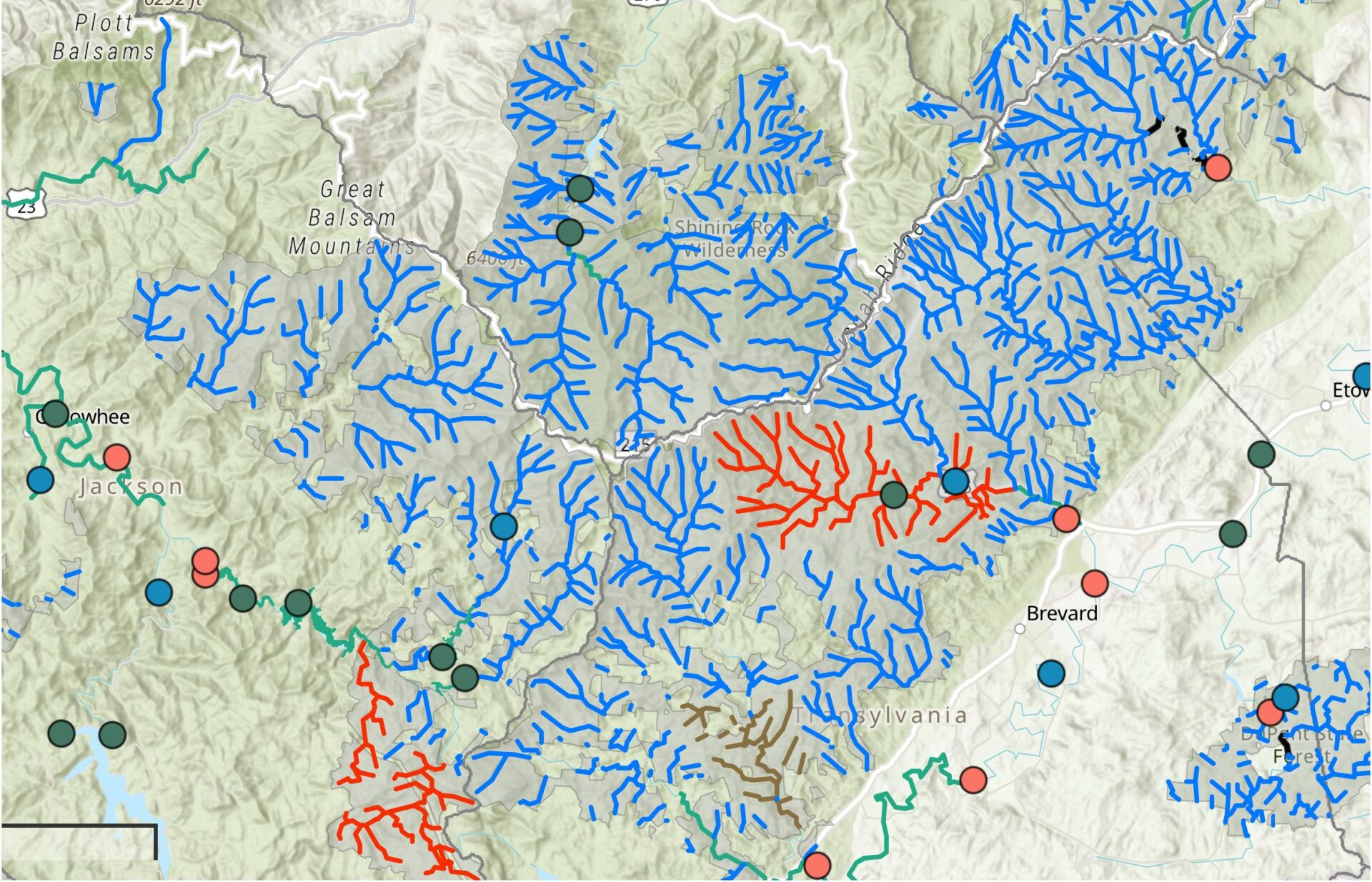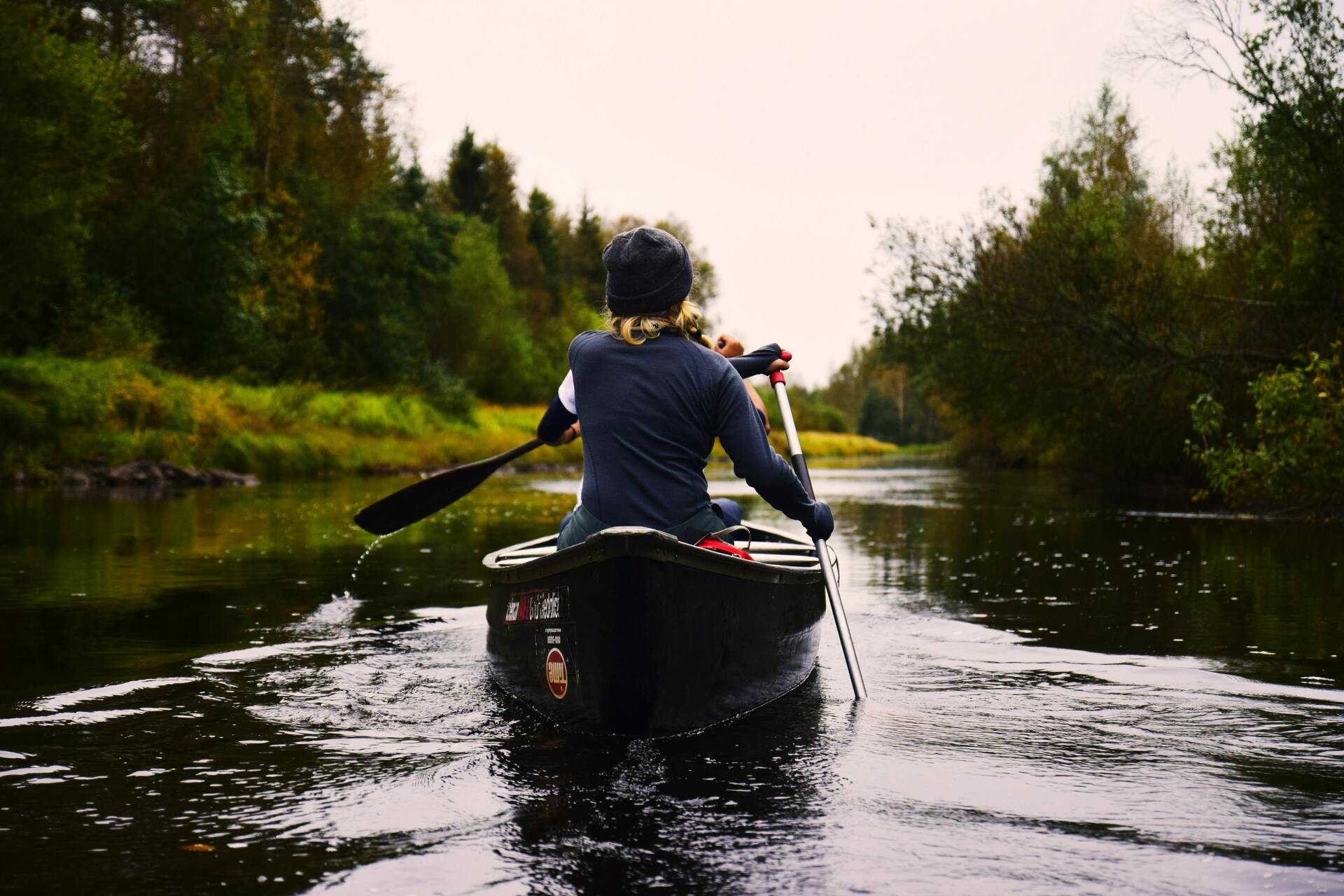Let's Go Fishing!
The mountains of Western North Carolina are home to roughly 4,000 miles of coldwater streams and more miles of trout-supporting waters than any other southeastern state. When it comes to the best fly fishing in the country, Transylvania County ranks right up there at the top. Within a one-hour drive of Brevard you will find over 500 miles of fishable trout streams and one of the highest concentrations of prime trout waters anywhere! This means that there is wonderful trout fishing everywhere you look, ranging from tiny brook trout streams to raucous rivers plunging through deep gorges filled with rainbows and browns. Whether you want to do a full-on fly-fishing Escape or just spend a peaceful afternoon wetting a line, Meraki Escape's secluded cabin vacation rentals are the perfect home base.
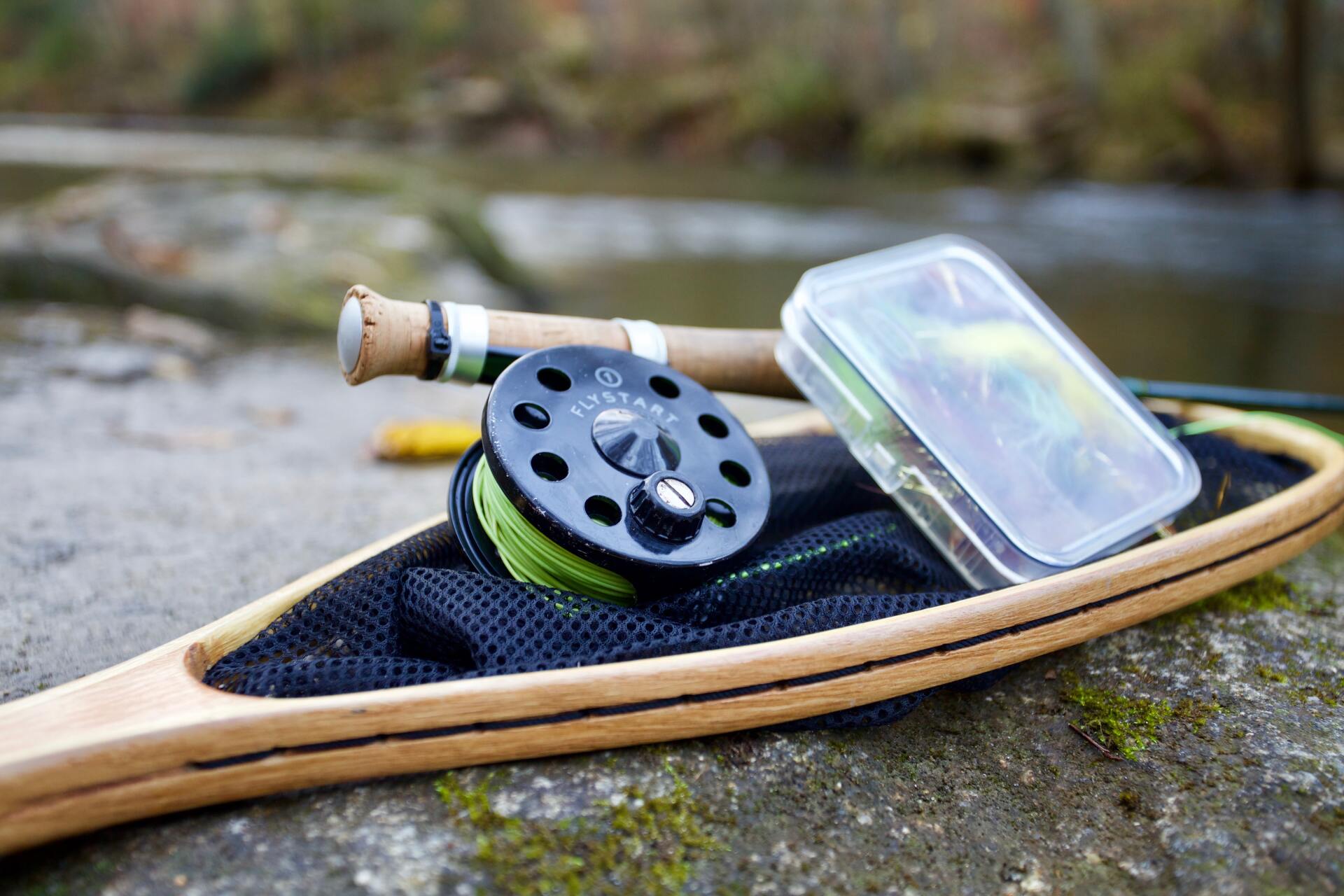
Fishing Regulations
The state of North Carolina requires that all people who are 16 years of age and older have a valid fishing license. There are resident and non-resident sport fishing licenses available. You can purchase a North Carolina state fishing license and learn about the most current regulations through the North Carolina Wildlife Resources Commission
WNC Trout Stocking Schedule
Click
Here
MAP AND COORDINATES
Transylvania County Map
Hatchery Supported Trout Streams
- Davidson River 35.2738, -82.7075 (Avery Creek to Ecusta intake)
- French Broad River 35.1870, -82.7259(Junction of West & North Forks to US 276 Bridge)
- Middle Fork French Broad River 35.1332, -82.8132 (upstream U.S. 178 Bridge to French Broad River)
- West Fork French Broad River 35.1405, -82.8508 (SR1312 & SR 1309 intersection to junction of West & North Forks)
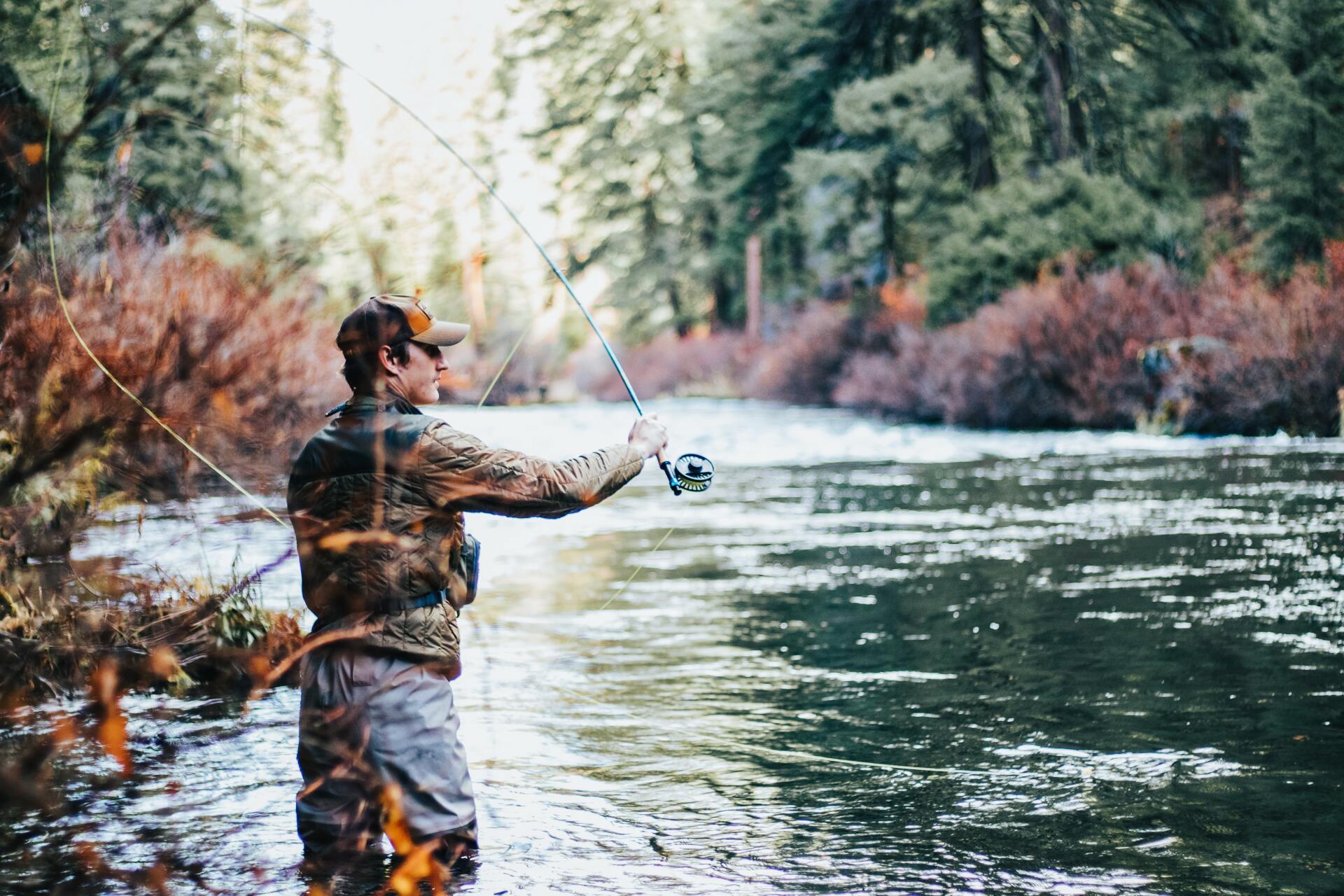
DELAYED HARVEST TROUT STREAMS
- East Fork French Broad River 35.1359, -82.8109 (Glady Fork to French B River)
- Little River 35.2021, -82.6188 (confluence of Lake Dense to 100 yards downstream of Hooker Falls)
C&R ARTIFICIAL FLIES/LURES ONLY TROUT STREAMS
- Davidson River 35.2888, -82.7789 (Headwaters to Avery Creek, excluding Avery Creek, Looking Glass Creek, and Grogan Creek)
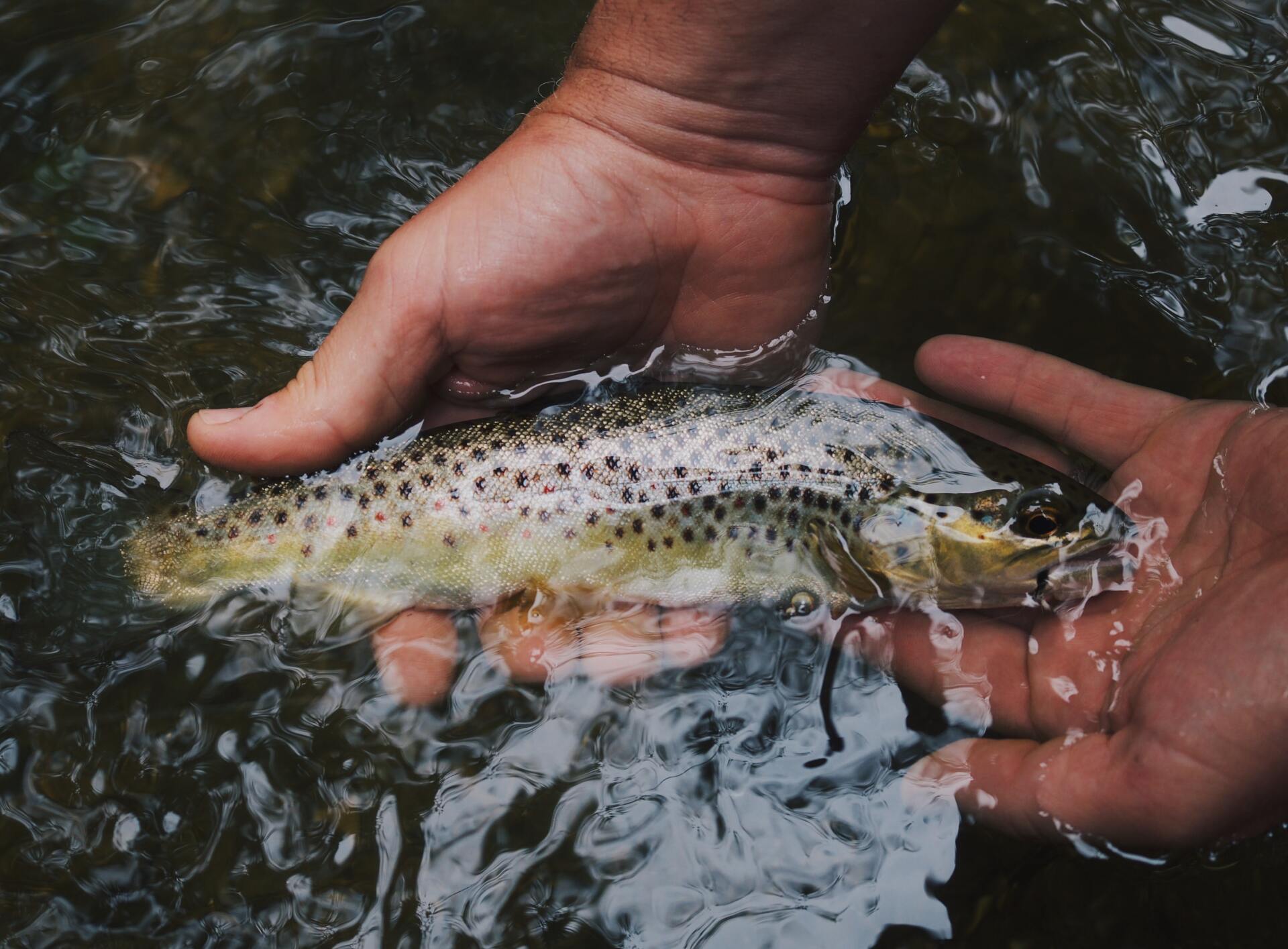
WILD TROUT STREAMS
- Looking Glass Creek 35.2991, -82.7698
- Avery Creek 35.2890, -82.7366
- South Mills River 35.3621, -82.6395
- North Fork French Broad- 35.2397, -82.8815 (Game land from Courthouse Creek)
- Davidson River 35.2869, -82.7361 (Game land upstream from Avery Creek)
- Yellowstone Prong 35.3229, -82.8393 (Shining Rock Wilderness area)
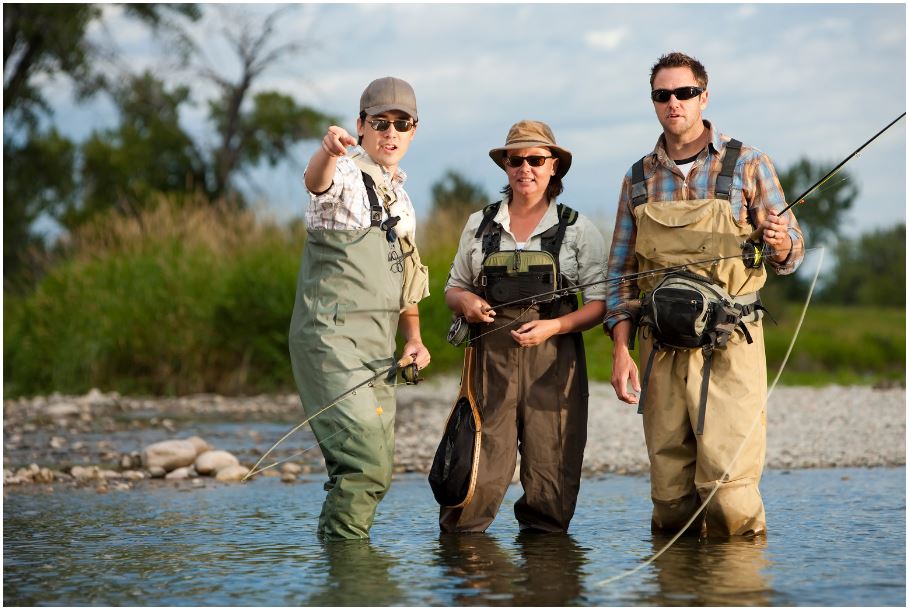
GUIDED TRIPS
Headwaters Outfitters: Trout wade and float trips, musky floats, lake bass charters, trout school, fly show and more! Plan on extra time for a beverage from The Forks on the River Taproom before coming back to your cabin.
Davidson River Outfitters: Trout wade and float trips, smallmouth bass and musky fishing trips. Their knowledgeable guide staff is there to help you have both a fun, and educational experience. Whether you are new to fly fishing, or you are an experienced angler looking to chase trophy fish, DRO has a guide for you. Many of their guides also teach specialized fly fishing techniques such as Tenkara, Spey Casting, and Euro Nymphing. With nine guides available almost the entire year, we can find the right fit for you.
Jackson County Guides and Outfitters Expert
guides for angler's on the lake, creek and rivers.

AVERY CREEK
Avery Creek is a small tributary of the Davidson near Brevard providing over 10 miles of close quarters and is a critical spawning ground for rainbows and browns. It is classified as a Wild Trout stream, which has no closed season and allows a limited amount of harvest. Access is via the Pisgah Horse Stables road and the 3.2-mile Avery Creek Trail. (Bonus: Hike the Avery creek falls trail to fish below scenic small stream water falls. This is a small stream with small wild trout, pack your light weight rod and bring lots of dry fly patterns.) Avery fishes best in the spring and summer, especially when the Davidson is high and stained from rains. Resident fish are generally 7 to 9 inches long, but wild and colorful. Fish a short 3- or 4-weight rod, bring some attractor dries and explore parts of the stream off the beaten path. Recommendation: Dry Fly -Simulator or Parachute Adams in size 12-16, Dropper - Bead Head pheasant tail, hare’s ear size 12-16.

DAVISON RIVER
The
Davidson River
is a nationally recognized trout fishery that flows through Pisgah National Forest along Highway 276. This river produces some of the regions largest wild trout, many trophy-class fish over 20 inches. About 14 miles of the river are managed under catch-and-release, fly-fishing only regulations (from its headwaters to Avery Creek). The fly-fishing only section is one of the most popular destinations for fly fishing in the state. It can be a real experience but depending on when you go, there may be more pressure due to heavy traffic. The spring and fall, especially, see big crowds and the convenient proximity to Asheville makes this a weekend getaway for many locals. The takeaway? Try to plan during less popular times, such as during the week if you come during peak seasons. The lower mile is hatchery supported. The Davidson’s upper reaches, including such major tributaries as Cove Creek and Daniel Ridge Creek, are small and tight, with wild rainbows averaging 7 inches. But the river widens and deepens as it gets below the Pisgah Fish Hatchery, creating long, smooth runs and glassy pools, interspersed with some pocket water. We recommend checking out this
DYI Guide to Fly Fishing the Davidson River
before you go.
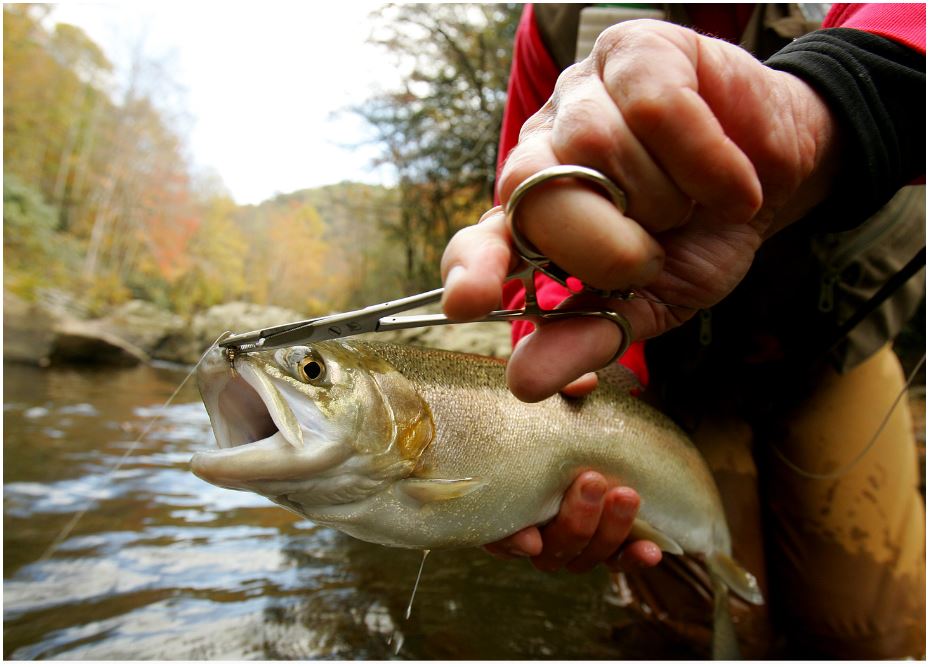
EAST FORK OF THE FRENCH BROAD RIVER
The East Fork of the French Broad River is a roadside stream near Rosman and has become one of the Western North Carolina’s most popular Delayed Harvest waters. It’s stocked along 4.75 miles of East Fork Road between Glady Fork Road and the main stem of the French Broad River. Please be respectful as the majority of access points along the river are surrounded by private land (a purple mark on a tree designates an area as private land). Catch-and-release regulations apply from October to May, and only single-hook artificial lures are allowed. There are three cascades and waterfalls as it makes its way from its headwaters to its confluence with the French Broad brimming with stocked rainbow, brown and brook trout. These fish see a lot of flies and can take some convincing to take yours. If they're not biting, walk up the road and try a different spot.
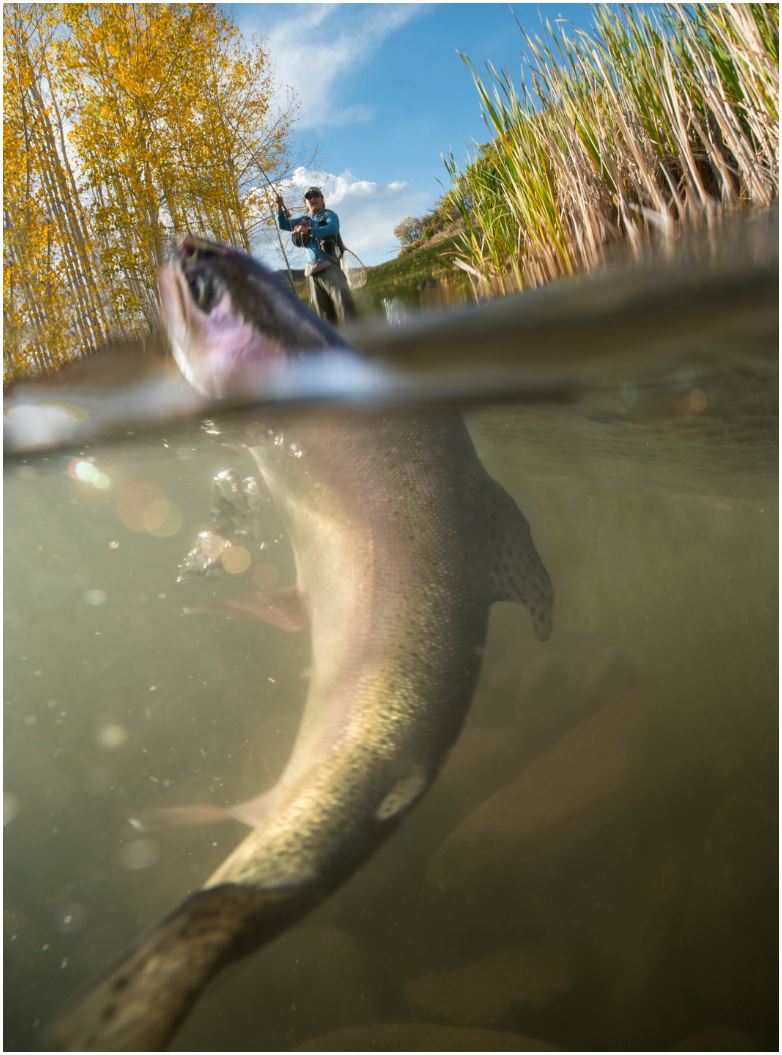
NORTH FORK OF THE FRENCH BROAD RIVER
Presented by
Headwaters Outfitters: "The North Fork is well suited for fly fishing. Like its sister to the West, the North Fork runs through a deep, rocky gorge, plunging over several major waterfalls on its way to the mainstem of the French Broad near our shop. Several unmarked trails lead into the gorge from Hwy. 215, but they are not for the faint of heart. Likewise, wading can be sketchy at higher water levels. The river’s fast runs and dark holes are home to browns and rainbows averaging 10 inches, but many quality fish are taken by bait fishermen and skilled fly anglers each year. Heavy stonefly nymphs and streamers are effective year-round. Above Macedonia Church Road, the river bisects private land in Balsam Grove and is heavily posted. The North Fork is regulated as Wild Natural Bait, allowing the harvest of four fish per day."
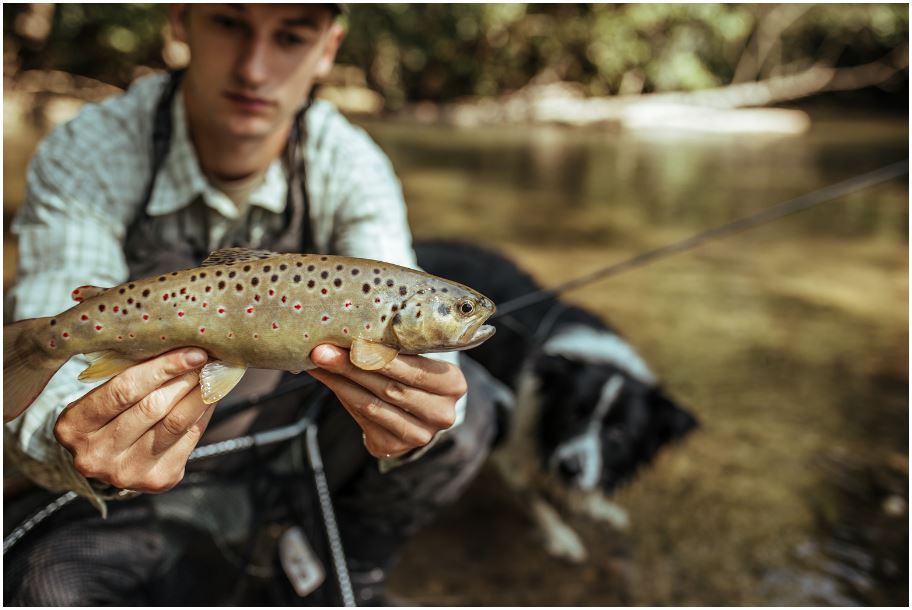
WEST FORK OF THE FRENCH BROAD RIVER
Presented by
WNC Fly Fishing: "The West Fork is a sleeper stream that produces some of our biggest browns each year, yet it is overshadowed by its more heavily stocked cousin to the east. The state stocks only 1,500 trout upstream of the Silversteen Bridge, located on State Road 1312, which parallels the river for several miles. Access is difficult to the Forest Service portion of the river, which is located in a narrow, mostly trail-less gorge between Flat Creek and the bridge. Effluent from several trout farms in the West Fork’s headwaters make this a fecund stream with lots of bugs; sections of the river are known for their profuse, if unpredictable, hatches of burrowing mayflies. Hatchery supported regulations apply, which means the West Fork is closed to fishing in March."

NORTH MILLS RIVER
The North Mills River is a medium sized river that runs through Pisgah National forest. This is a Delayed Harvest stream and is stocked with 11,000 trout between October through June, along a 4-mile stretch every year – definitely worth checking out! Easy access as well as several handicapped accessible locations can be found at the North Mills River recreation area. This area makes for a relatively easy wade and the heaviest fishing pressure. Bonus: Hike in from the Trace Ridge Trailhead to the higher reaches and find solitude and hungry fish on weekdays. Dries, nymphs, streamers, they all work here.
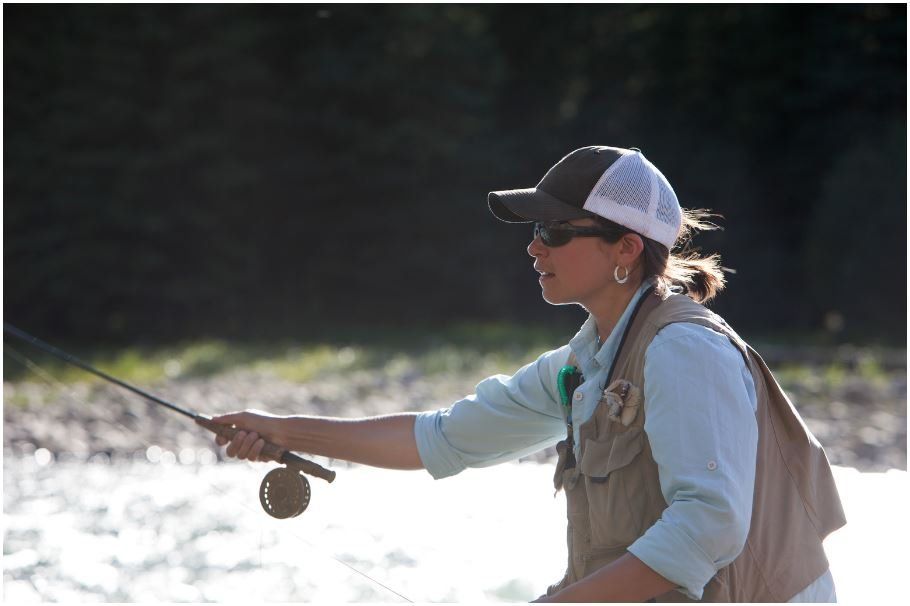
SOUTH MILLS RIVER
The South Mills River, formed by numerous feeder creeks high along the
Blue Ridge Parkway, is a medium-sized freestone stream with good access that does require hiking. The hiking is relatively easy though along the South Mills River Trail that provides access. Year-round fishing is available, although summer doesn’t usually yield much in the way of results. The South Mills becomes fishable for fly anglers at the Cradle of Forestry Historic Area off Highway 276 where it is pocked with beaver ponds full of small, wild brown trout. Below the old gauging station on FS 476, the river widens as it drops over several beautiful cascades, including scenic High Falls. If you love backcountry fishing for wild browns and rainbows, the South Mills is sure to please!
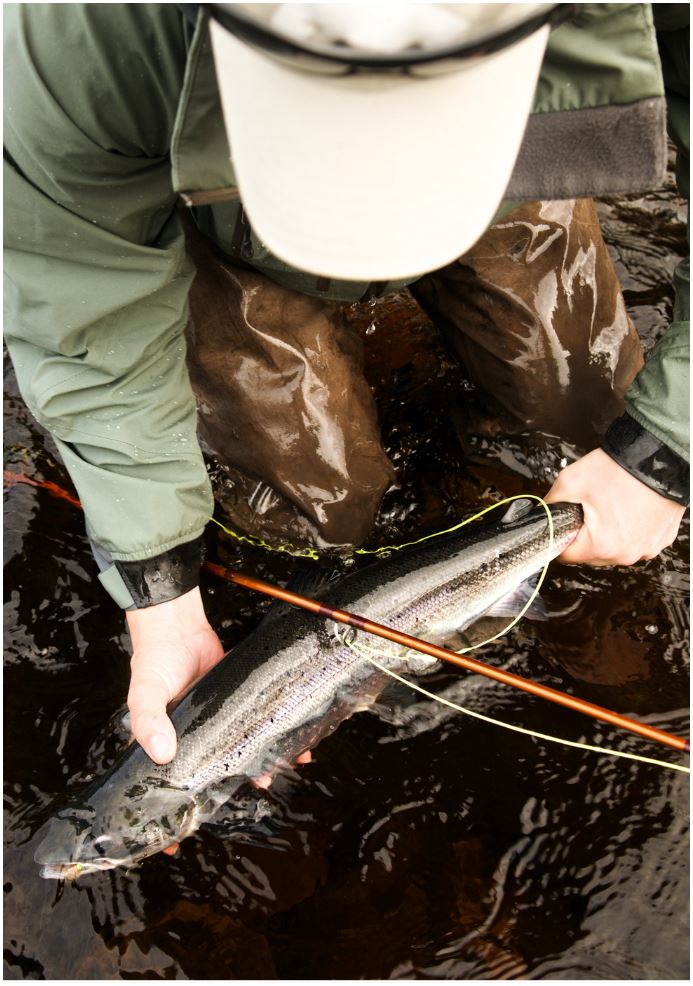
WEST FORK OF THE PIGEON RIVER
Presented by
Headwaters Outfitters: Located just across the divide from our fly shop, the West Fork is a sublime little trout stream, with crystalline pools so clear you can count the cobblestones six feet down. Beginning high along the Blue Ridge Parkway, the river follows Hwy. 215 on its steep descent towards Lake Logan. The uppermost portion of the creek is steep, tight and designated as Wild Trout water, allowing single hook, artificial lures only. Between Queen Creek and Lake Logan, the West Fork is designated as Delayed Harvest, which is catch-and-release from October through May and full of stocked trout. Either stretch is fine dry-and-dropper water, but please mind private property downstream of Sunburst Campground.

PANTERTHTOWN CREEK
Pathertown Creek located in
Panthertown Valley is one of the more hidden spots in the area and proves a great spot to catch wild Brook Trout in the 6” to 8” range. It’s classified as wild trout waters, catch and release, and single hook, artificial lures only. It requires some hiking to get to the creek so crowds tend to overlook it (take a
Guided Hike with White Dot Adventures). However, Panthertown Valley is known as the Yosemite of the East so the scenery combined with the fishing makes it a top-notch location. Bonus: Visit one of the Valley’s highlights, Schoolhouse Falls, for an attempt at some Southern Appalachian Brook Trout. While technically on Greenland Creek, Schoolhouse is just upstream from Panthertown where it joins to form the headwaters of the Tuckaseegee. Go to
WNC Fly Fishing for directions.

JACKSON COUNTY'S FISHING HOLES
We've outlined above Transylvania County's Fishing spots but the opportunities don't end there. Meraki Escape sit's at the edge of both Transylvania and Jackson County, offering angles an abundance of fishing opportunities! Check out their
Fishing Guide and another 20+ creeks and rivers to cast your line.
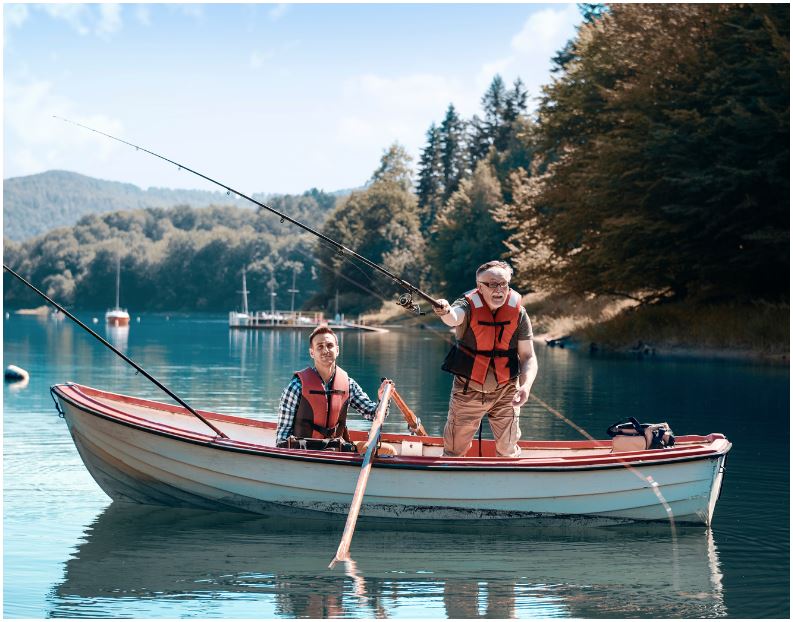
LAKE FISHING IN JACKSON COUNTY
Lake Glenville is the largest lake in the county, and one of the highest-elevation lakes east of the Rocky Mountains. It features an expansive 26 miles of shoreline, seven islands and plenty of waterfalls to discover. Here, fishermen will find endless supplies of trophy-sized large and smallmouth bass, trout and perch. Signal Ridge Marina rents pontoon boats and Lakeshore Marina rents boats and fishing gear.
Bear Creek Lake has the reputation of being one of the cleanest lakes in Western NC. Bear Lake is regularly stocked with fish by the North Carolina Wildlife Commission, making it a very popular stop for anglers. The crystal-clear waters are loaded with monster bass, trout and brim.
Nestled in the Blue Ridge Mountains, Cedar Cliff Lake is the lowest in elevation and is surrounded by large rock walls. Although not stocked by North Carolina’s Wildlife Resources Commission, this secluded lake possesses one of the most impressive walleye and rainbow trout populations, thanks to the lake’s proximity to the Tuckasegee River.
The scenic and peaceful Wolf Creek Lake is a 183-acre, high-elevation lake that contains plentiful brook, brown and rainbow trout, giant bass and walleye.
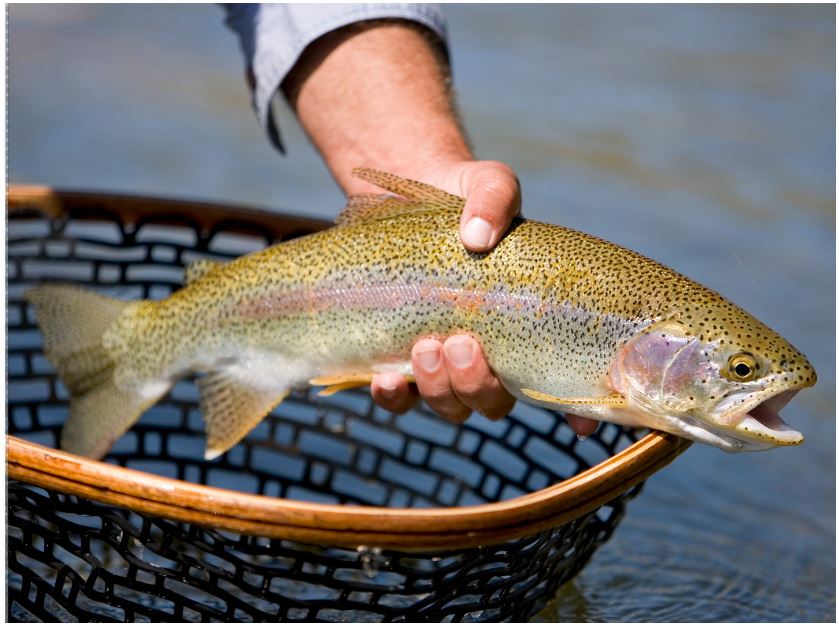
BOBBY N. SETZER STATE FISH HATCHERY
Located in the Pisgah National Forest near Brevard, and just 22 miles from our mountain cabin vacation rentals, Bobby N. Setzer State Fish Hatchery is the state's largest trout hatchery. The facility consists of 16 indoor rearing tanks, where trout are kept until they are "fingerlings" (about three inches long), and 54 outdoor raceways, where the fish are grown until they are "catchable" size (at least 10 inches long). The water supply for the hatchery comes from surface water diversions on Davidson River and Grogan Creek, which supply about 3,500 gallons per minute of cold mountain water year-round.
Bobby N. Setzer Hatchery shares its site facilities with the Pisgah Center for Wildlife Education, which features interactive exhibits, education sites and interpretive displays explaining the various wildlife management activities of the Wildlife Resources Commission. The education center features a hatchery raceway exhibit that describes the trout production process in detail.
GET OUR FREE 1-DAY ITINERARY!
Would you like to receive the best travel deals and inspiration straight to your inbox?
(We'll only send out emails monthly. No Spam. Unsubscribe whenever you want. )
All Rights Reserved | Meraki Escape
Website Design & Reservation Software by Resnexus

